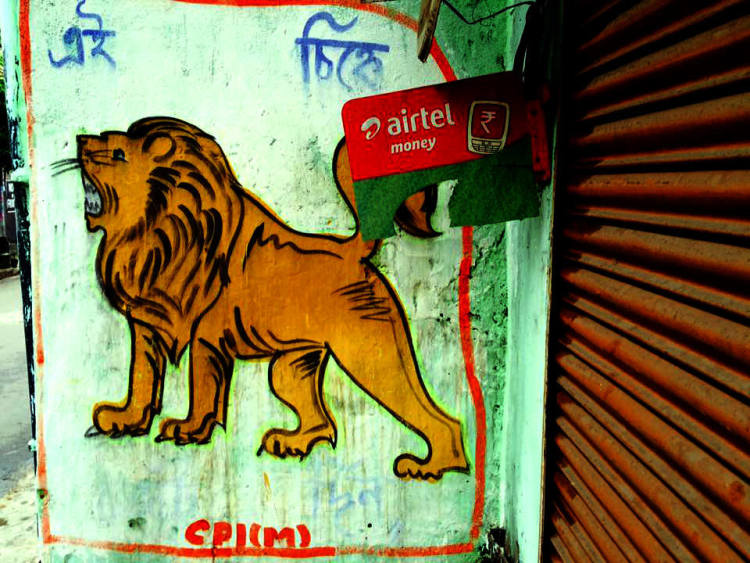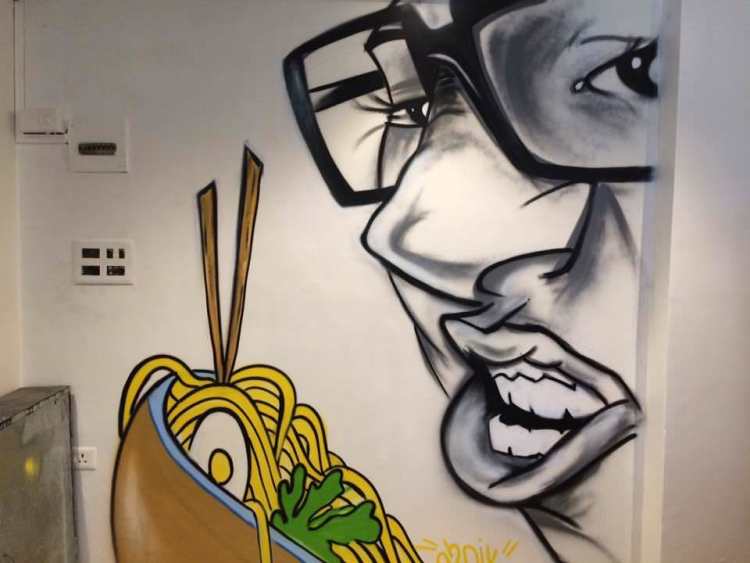With every single spray from the aerosol cans, Reevu Wangdi was changing the moss-tinted yellow wall into a pallet. As I stood next to him I observed each stroke and style of Reevu who has been a graffiti artist since last 5 years. The smell of the aerosol slowly percolated through my senses and I stood there like a somnambulist, tied down, as the inspiring painting was conjuring before my eyes.

The creation of wall art or graffiti dates back to our ancestors, who used spears, stones and other pointed objects to create art as a language on their walls. Wall art is the legacy that the cave people left behind to understand the life of the primitive generation through pictorial depiction. But with Darwin’s evolution, this art has come a long way and taken myriad forms in different places of the world. A wall artist from Kolkata Justin Rasario, says, “Graffiti entered Kolkata really late, it was only in 2012 that artists from Germany came down to Kolkata and took up random walls to paint.”

Some use wall art as a propaganda, some politics, some to agitate, some for art, and some to clean the city. However way you want it, the grandiose of wall art can never fail to impress. ‘Walls have ears’ and for some it seems have eyes and mouth as well. Most walls in Kolkata are covered not by the work of anonymous artists, but by political flags-propagating.
A place of Jamini Roy, Mukul Dey, Rabindranath Tagore, their work is only limited to few metro stations and grand museums. While the classical era has reached the fag end, these new artists Snik (Reevu), Shrek (Justin) and Shock, who work under pseudonyms are piloting and preserving the culture of wall art in Kolkata. They do not need a canvas and brushes, their only ammunitions are paints cans, “The wall is my canvas. Graffiti is a quick form of art, I don’t need to sit and paint for hours in one room; that is not my style. The walls talk to me, I don’t choose them, they choose me” says Reevu.
These artists unanimously agree that although the wall art in West Bengal is a remnant of the political activism, the idea is changing, and youngsters are getting more hooked to hip-hop culture, which is reflected in the wall art. With only three in their league, these artists are trying to spread their art through what they can.

Anjali Rao, a painter of sorts says, “It takes courage to come out in the open and paint, not every artist can do that, most of them are shy and keep their work to themselves. Street art is attuned to the hip-hop culture and not everyone in this city is a hip-hop enthusiast.”

Justin admits it is a costly hobby. “Paint cans are really costly, and our art gets lost after sometime, the walls are never permanent.” The wall artists are heavily dependent on commercial projects. Getting support from government is not easy, acknowledges Reevu, but it is the people’s support that is moving them to work for an art that gets washed away.

The walls are an important part of their life, although they have pseudonyms most of them do not shy away from public, they come out with their ammunition in broad day light, clear the place and start creating. With curious passerby admiring their piece, and no police nuisance, they are left with their wall to speak to. There are no hidden messages, no powerful metaphor lurking behind the red ink, no activism, no propaganda, just art- plain simple, colourful art.








